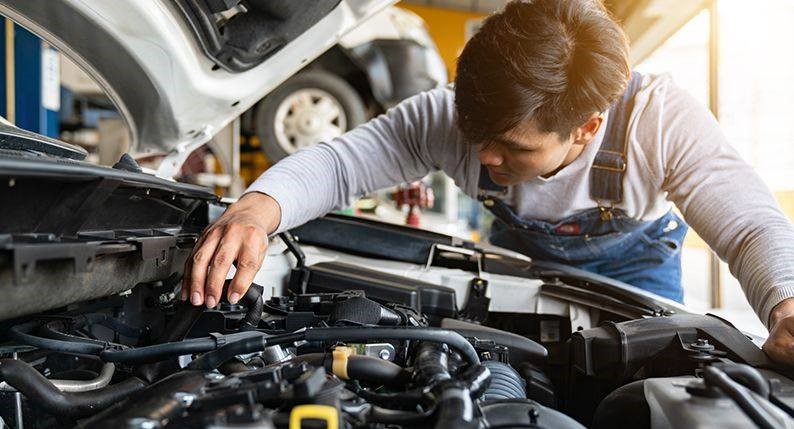Automotive safety and security has actually undergone remarkable makeovers over the years, turning what were once basic safety and security procedures into highly sophisticated systems that aid avoid mishaps and safeguard travelers. From the very early days of the auto to the most recent advancements in man-made intelligence and independent driving, each turning point has actually made a substantial influence on how safe we get on the road. In this article, we'll take a look at the advancement of vehicle safety and security functions, highlighting key minutes that have shaped the modern-day lorry.
The Early Beginnings: Seat Belts and the Very First Step Toward Safety. In the very early 20th century, autos were much from the safety-conscious devices they are today. There were no seatbelts, no airbags, and no contemporary safety attributes to protect passengers in the occasion of a crash. The intro of the seatbelt in the 1950s marked the very first significant progression in auto safety. Volvo engineer Nils Bohlin is credited with developing the three-point seat belt in 1959, a layout that secured both the lap and shoulder, providing much better protection in case of an accident. This innovation promptly ended up being a conventional feature in autos and laid the foundation for future safety innovations.
As the years took place, auto manufacturers started to focus extra on crash protection. In the 1970s, fold areas were presented, developed to soak up the effect of a collision and protect the passengers inside. These areas of the automobile were engineered to deform throughout a collision, reducing the force that reached the owners.
The 1980s and 1990s: Air Bags, Anti-lock Brakes, and Automobile Stability. By the 1980s, the automotive industry saw the surge of air bags, a groundbreaking security feature that gave added defense throughout frontal collisions. Made for the driver and front guest, air bags progressed to include side-impact air bags, drape air bags, and even knee airbags, using protection for guests in all areas of the car.
In the 1990s, anti-lock braking systems (ABS) came to be extra extensive. Abdominal muscle protects against the wheels from securing up during difficult stopping, permitting the driver to maintain steering control throughout an emergency situation quit. This function, incorporated with traction control systems and the intro of electronic stability control (ESC), considerably minimized the chances of skidding or losing control on slippery surface areas. These innovations significantly improved overall vehicle security, particularly in negative weather condition problems.

The 2000s: Advanced Chauffeur Support Equipment (ADAS) and the Safety And Security Change. As modern technology advanced, so did automotive security functions. The 2000s noted a new period with the introduction of innovative driver aid systems (ADAS) These systems made use of sensing units, cameras, and radar to provide real-time support to drivers, boosting situational recognition and reducing the danger of mishaps.
Several of the key ADAS functions that started to appear consist of:
Lane Separation Warning: Informs the motorist if the vehicle wanders out of its lane without signaling, assisting to avoid unintentional lane changes. Blind-Spot Monitoring: Uses sensing units to detect lorries in the motorist's unseen area and provides warnings to avoid hazardous lane modifications. Adaptive Cruise Control: Immediately readjusts the auto's speed to preserve a risk-free distance from the lorry in advance, lowering the threat of rear-end crashes. An additional landmark was the advancement of automatic emergency situation stopping (AEB) AEB systems spot an approaching collision and automatically apply the brakes if the chauffeur doesn't respond in time. This function has actually been shown to minimize rear-end mishaps, making it among one of the most essential security advancements in recent years.

The 2010s and Beyond: Autonomous Cars and AI Safety. Looking toward the future, the auto market is concentrating on even more advanced safety modern technologies, specifically in the world of autonomous vehicles and artificial knowledge (AI) With developments in equipment understanding, autonomous driving systems are ending up being efficient in operating automobiles without human treatment. Companies like Tesla, Waymo, and others are pressing the envelope on self-driving automobiles, which can ultimately remove human error-- the leading reason for traffic accidents.
In enhancement to independent cars, AI-powered systems are being incorporated into contemporary vehicles to boost security. These systems examine substantial amounts of data from cams, sensing units, and various other onboard modern technologies to make split-second decisions that improve safety. AI systems can readjust the automobile's rate, change lanes, and even apply the brakes to avoid prospective collisions.
Conclusion: A Safer Future Ahead. The evolution of vehicle safety and security features has been nothing brief of remarkable. As self-governing driving modern technology continues to establish, the future of automotive safety and security looks even brighter, with the possible to eliminate human error entirely and decrease accidents to nearly absolutely no.
Navigation
Latest Posts
Time for an Upgrade? Optimize Your Trade-In Value Right Here
High-Quality, Low-Mileage: Finest Secondhand Autos on the Whole Lot
Why Sherman Dodge is the Top Choice for Mobility Rentals